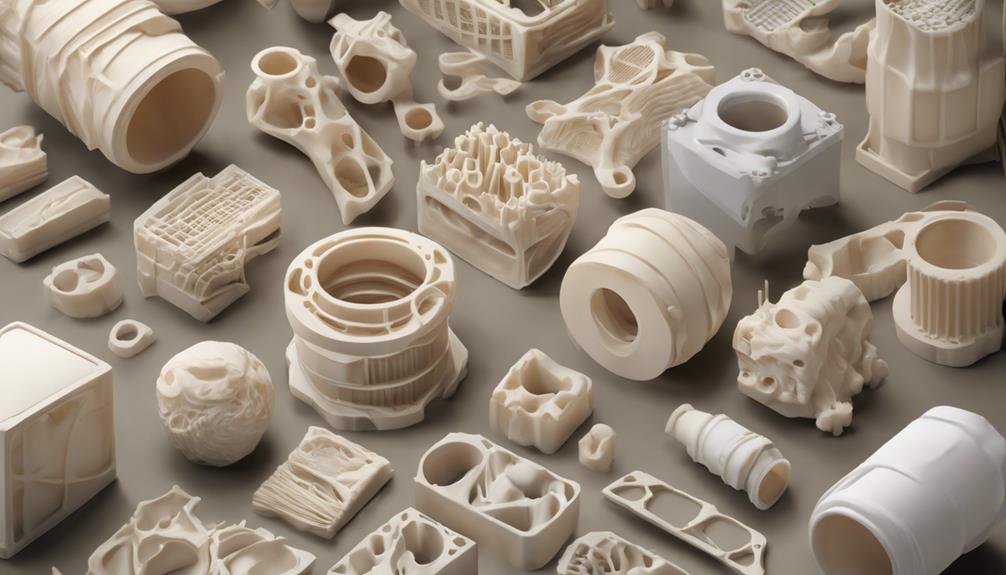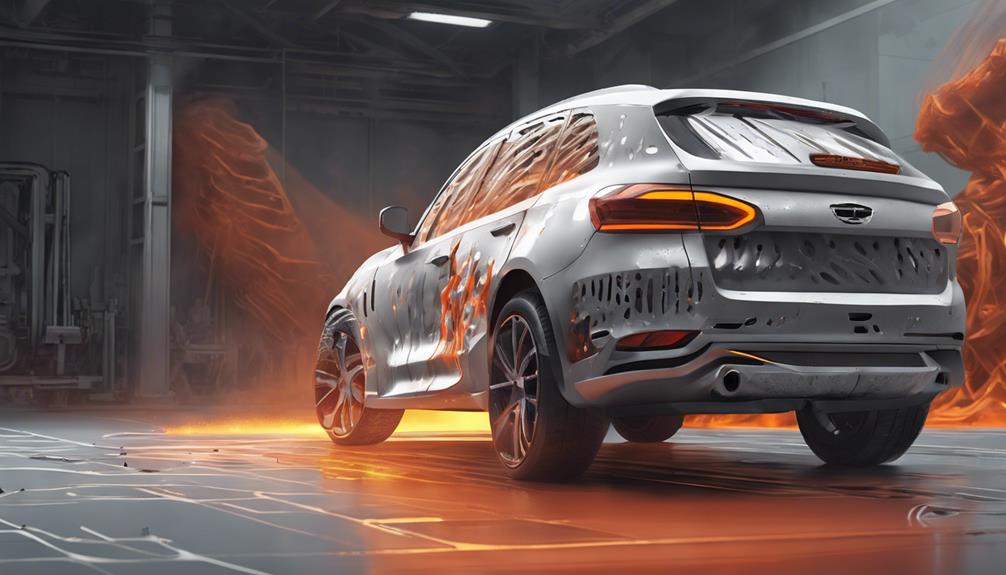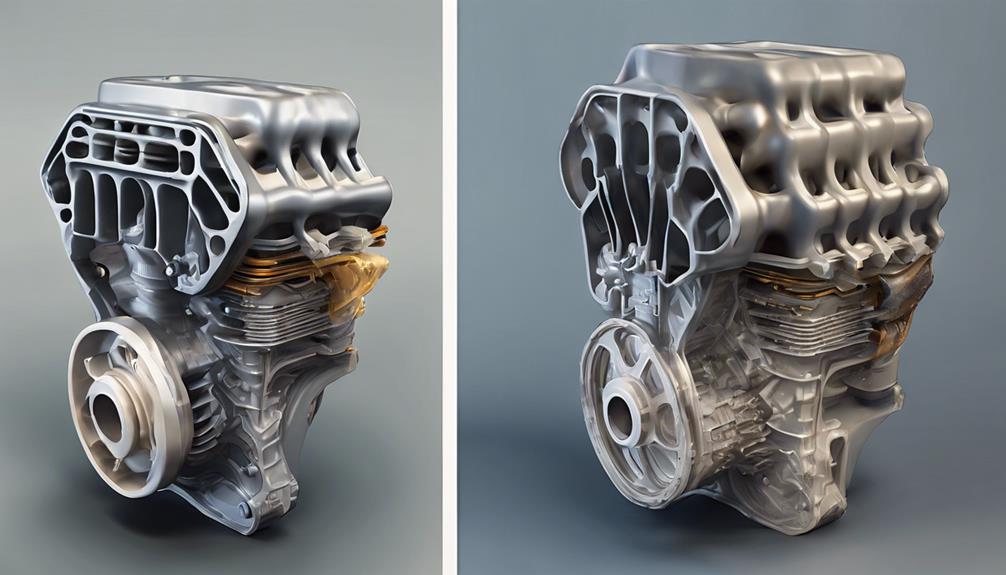Exploring the domain of 3D printing materials reveals a fascinating world where high heat resistance takes center stage. As industries demand more from additive manufacturing, the quest for filaments capable of withstanding extreme temperatures intensifies. PEEK, PAHT CF15, and Polycarbonate emerge as key players in this arena, each offering unique attributes that cater to specific industry requirements. The intricate balance between thermal properties and mechanical strength in these materials opens up a realm of possibilities for applications that demand resilience under high heat conditions. The evolution of 3D printing materials towards enhanced heat resistance signifies a promising future for innovative solutions across diverse sectors.
High-Temperature Filaments Overview

High-Temperature Filaments offer exceptional heat resistance properties, making them ideal for demanding applications in industries such as medical, automotive, aerospace, and engineering.
These filaments, especially PEEK, exhibit a glass shift temperature of 143°C and can operate effectively within the range of 360-400°C, with bed temperatures typically set between 120-145°C. Specialized printers are often required for these high-temperature filaments to guarantee precise and reliable printing.
In addition to PEEK, other materials like PAHT CF15, Polycarbonate (PC), Polypropylene, and Polyamide (PA) cater to specific industry needs by providing varying heat resistance capabilities. Understanding the unique properties of these filaments is essential for selecting the most suitable material for specific applications requiring high-temperature tolerance.
Properties of PEEK Filament
PEEK filament, known for its exceptional heat resistance properties, is a highly sought-after material in various industries due to its ability to withstand high operating temperatures. With a glass shift temperature of 143°C and an operating temperature range of 360-400°C, PEEK filament offers superior thermal stability. It requires a bed temperature of 120-145°C and specialized printers for successful 3D printing.
Commonly used in medical, automotive, and aerospace applications, PEEK filament exhibits excellent mechanical properties, chemical resistance, and biocompatibility. Its high heat resistance makes it ideal for producing parts that need to endure extreme temperatures, making it a valuable material for demanding engineering projects.
PAHT CF15 Features and Uses

Known for its unique characteristics in technical applications, PAHT CF15 filament offers a combination of heat resistance and mechanical strength that caters to specialized engineering needs. With a bed temperature requirement of 100-120°C and an extrusion temperature range of 260-280°C, this filament boasts a glass shift temperature of 72°C.
PAHT CF15 is specifically designed for engineering applications in technical projects, where heat resistance and durability are paramount. It requires a build chamber for best printing results. This filament is favored in industries requiring high-performance materials, such as aerospace, automotive, and medical sectors.
The PAHT CF15 filament stands out for its ability to withstand elevated temperatures and provide robust mechanical properties essential for demanding applications.
Polycarbonate (PC) Printing Considerations
Considerations for 3D printing with Polycarbonate (PC) filament involve specific temperature settings and environmental conditions to guarantee high-quality print quality and material performance. Polycarbonate requires a high nozzle temperature ranging from 260-310°C and a bed temperature between 80-120°C due to its high glass shift temperature of 150°C.
It is important to utilize an enclosed printing chamber to prevent warping and secure excellent print outcomes. Additionally, proper ventilation is essential when working with Polycarbonate to mitigate any potential fume exposure.
Adhering to these temperature guidelines and environmental precautions will result in successful 3D prints using Polycarbonate filament, known for its strength, durability, and optical clarity.
Applications of Polypropylene Filament

What are the practical applications of Polypropylene Filament in various industries?
Polypropylene filament is gaining popularity for its diverse applications across different sectors. In the industrial sector, polypropylene filament is used for creating prototypes, manufacturing parts, and producing packaging materials due to its lightweight nature and chemical resistance.
In the sportswear industry, this filament is utilized for designing athletic apparel, backpacks, and outdoor gear because of its durability and flexibility.
Additionally, polypropylene filament is employed in the production of various home appliances such as food containers, storage bins, and kitchen utensils, where its heat resistance and low moisture absorption properties are highly valued.
Its versatility and unique characteristics make polypropylene filament a valuable material in multiple industries.
Frequently Asked Questions
Can PETG Filament Be Used for Functional Parts in Automotive Applications?
PETG filament can be suitable for functional automotive parts due to its moderate heat resistance, withstanding temperatures up to 75°C. With proper extrusion and bed temperatures, it can offer durability and reliability in certain automotive applications.
What Are the Key Differences Between PEEK and PAHT CF15 Filaments?
In comparing PEEK and PAHT CF15 filaments, notable differences include the glass transformation temperatures of 143°C and 72°C, respectively. PEEK requires specialized printers and finds usage in medical, automotive, and aerospace sectors, while PAHT CF15 is suited for engineering applications with a build chamber requirement.
How Does PLA Heat Resistance Compare to Other Moderate Heat-Resistant Filaments?
PLA offers a modest heat resistance, warping at 60°C and melting around 80°C. Compared to PETG, which withstands temperatures up to 75°C, PLA is suited for medical implant applications. It necessitates bed temperatures of 40-60°C and nozzle temperatures ranging from 190-215°C.
Are There Any Safety Considerations When Working With High-Temperature Resins?
When working with high-temperature resins, safety considerations include proper ventilation to mitigate fumes, protective gear like gloves and goggles, and adherence to manufacturer guidelines to prevent burns and exposure risks.
What Are the Common Challenges Faced When Printing With Polyamide (Pa) Filament?
Printing with polyamide (PA) filament poses challenges like warping due to poor bed adhesion. High extrusion temperatures can cause nozzle clogging. Moisture absorption affects filament quality. Proper bed heating and controlled cooling mitigate these issues.
Conclusion
To sum up, high-temperature filaments like PEEK, PAHT CF15, and Polycarbonate are akin to the sturdy pillars supporting the ever-expanding world of 3D printing.
With their exceptional heat resistance properties and mechanical strength, these materials pave the way for innovation in industries such as medical, automotive, and aerospace.
As technology advances and boundaries are pushed, these filaments continue to play a crucial role in shaping the future of additive manufacturing.